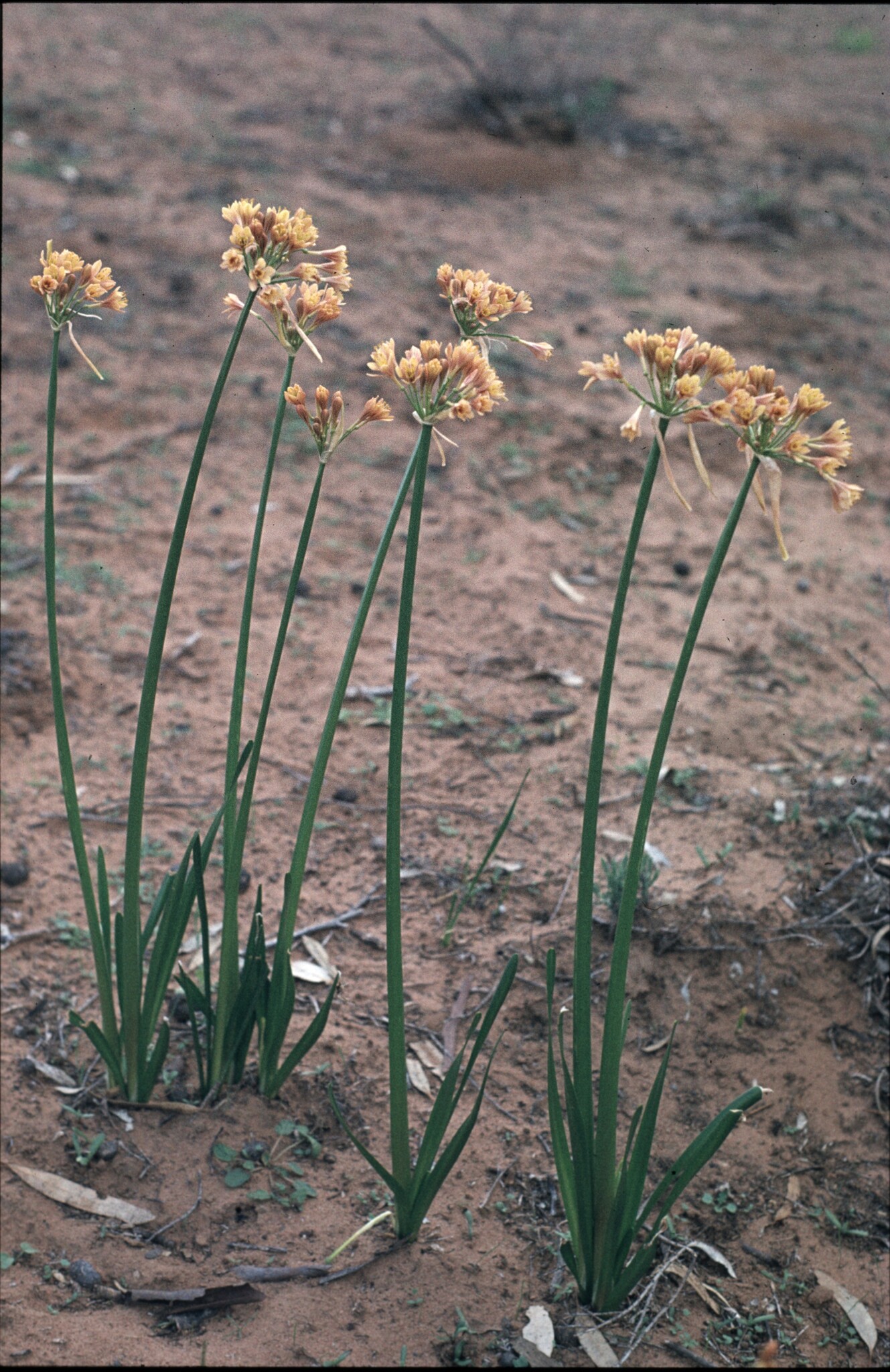
Bulbous or rhizomatous perennial or biennial herbs, roots contractile. Leaves simple, annual or persistent, usually flat and sheathing at the base. Inflorescence terminal and usually umbel-like (occasionally solitary) with 2 or more bracts that enclose the flower cluster in bud. Flowers bisexual, generally regular, 3-parted. Tepals 6, in 2 whorls of 3, occasionally with a corona (crown or tube) as in Narcissus, the lobes free or united into a tube. Stamens 6, in 2 whorls of 3, free or united into a cup; anthers dehiscent via longitudinal slits or apical pores (in Galanthus and Leucojum). Ovary inferior, half-inferior or superior, of 3 united carpels and 3-chambered, each chamber with several to many ovules with axile or basal placentation. Fruit a capsule or, sometimes, berry. Seeds flat, winged or angular, sometimes D-shaped, testa black (with phytomelan).
Now includes Agapanthaceae and Alliaceae. This treatment follows Stevens, P.F. (2018, Angiosperm Phylogeny Website).
Rarely grown genera include: Urceolina, Boophone, Sternbergia, Phaedranassa and Stenomesson.
Umbellate flowers with spathe-like bracts; inferior ovary.
Mostly tropical family of about 73 genera and 1605 species with centres of diversity in S America (mostly Andes), S Africa and the Mediterranean.
The Journals Herbertia and Amaryllis have many articles of interest to bulb growers. The 1935 Year Book of the American Amaryllis Society, pp. 43-52, has a valuable historical article by G.K. Cowlishaw on the cultivation of Amaryllids in Australia.
Source: (2005). Amaryllidaceae. In: . Horticultural Flora of South-eastern Australia. Volume 5. Flowering plants. Monocotyledons. The identification of garden and cultivated plants. University of New South Wales Press.
Updated by: Val Stajsic, April 2018
